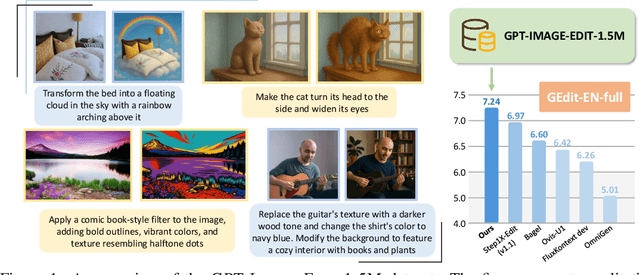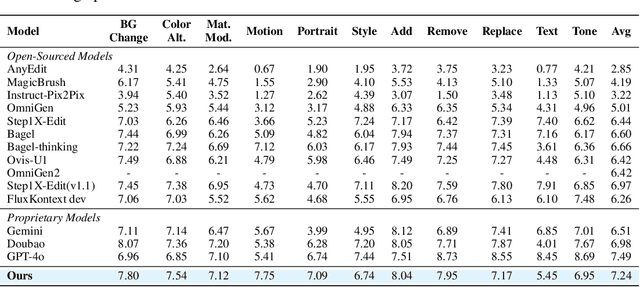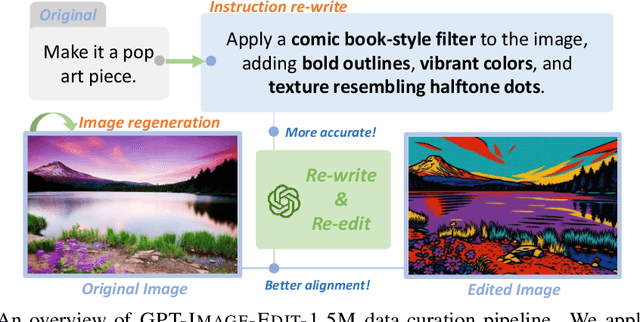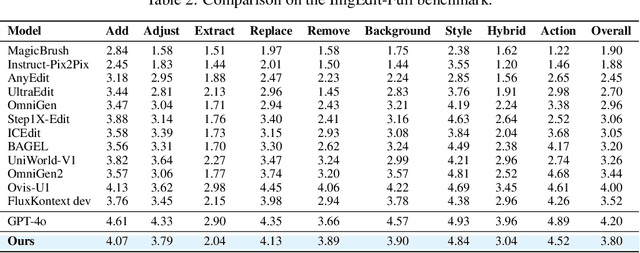Qing Liu
Guangdong University of Technology, Guangzhou, China
PSScreen V2: Partially Supervised Multiple Retinal Disease Screening
Oct 26, 2025Abstract:In this work, we propose PSScreen V2, a partially supervised self-training framework for multiple retinal disease screening. Unlike previous methods that rely on fully labelled or single-domain datasets, PSScreen V2 is designed to learn from multiple partially labelled datasets with different distributions, addressing both label absence and domain shift challenges. To this end, PSScreen V2 adopts a three-branch architecture with one teacher and two student networks. The teacher branch generates pseudo labels from weakly augmented images to address missing labels, while the two student branches introduce novel feature augmentation strategies: Low-Frequency Dropout (LF-Dropout), which enhances domain robustness by randomly discarding domain-related low-frequency components, and Low-Frequency Uncertainty (LF-Uncert), which estimates uncertain domain variability via adversarially learned Gaussian perturbations of low-frequency statistics. Extensive experiments on multiple in-domain and out-of-domain fundus datasets demonstrate that PSScreen V2 achieves state-of-the-art performance and superior domain generalization ability. Furthermore, compatibility tests with diverse backbones, including the vision foundation model DINOv2, as well as evaluations on chest X-ray datasets, highlight the universality and adaptability of the proposed framework. The codes are available at https://github.com/boyiZheng99/PSScreen_V2.
BrainMCLIP: Brain Image Decoding with Multi-Layer feature Fusion of CLIP
Oct 22, 2025Abstract:Decoding images from fMRI often involves mapping brain activity to CLIP's final semantic layer. To capture finer visual details, many approaches add a parameter-intensive VAE-based pipeline. However, these approaches overlook rich object information within CLIP's intermediate layers and contradicts the brain's functionally hierarchical. We introduce BrainMCLIP, which pioneers a parameter-efficient, multi-layer fusion approach guided by human visual system's functional hierarchy, eliminating the need for such a separate VAE pathway. BrainMCLIP aligns fMRI signals from functionally distinct visual areas (low-/high-level) to corresponding intermediate and final CLIP layers, respecting functional hierarchy. We further introduce a Cross-Reconstruction strategy and a novel multi-granularity loss. Results show BrainMCLIP achieves highly competitive performance, particularly excelling on high-level semantic metrics where it matches or surpasses SOTA(state-of-the-art) methods, including those using VAE pipelines. Crucially, it achieves this with substantially fewer parameters, demonstrating a reduction of 71.7\%(Table.\ref{tab:compare_clip_vae}) compared to top VAE-based SOTA methods, by avoiding the VAE pathway. By leveraging intermediate CLIP features, it effectively captures visual details often missed by CLIP-only approaches, striking a compelling balance between semantic accuracy and detail fidelity without requiring a separate VAE pipeline.
PRoH: Dynamic Planning and Reasoning over Knowledge Hypergraphs for Retrieval-Augmented Generation
Oct 14, 2025Abstract:Knowledge Hypergraphs (KHs) have recently emerged as a knowledge representation for retrieval-augmented generation (RAG), offering a paradigm to model multi-entity relations into a structured form. However, existing KH-based RAG methods suffer from three major limitations: static retrieval planning, non-adaptive retrieval execution, and superficial use of KH structure and semantics, which constrain their ability to perform effective multi-hop question answering. To overcome these limitations, we propose PRoH, a dynamic Planning and Reasoning over Knowledge Hypergraphs framework. PRoH incorporates three core innovations: (i) a context-aware planning module that sketches the local KH neighborhood to guide structurally grounded reasoning plan generation; (ii) a structured question decomposition process that organizes subquestions as a dynamically evolving Directed Acyclic Graph (DAG) to enable adaptive, multi-trajectory exploration; and (iii) an Entity-Weighted Overlap (EWO)-guided reasoning path retrieval algorithm that prioritizes semantically coherent hyperedge traversals. Experiments across multiple domains demonstrate that PRoH achieves state-of-the-art performance, surpassing the prior SOTA model HyperGraphRAG by an average of 19.73% in F1 and 8.41% in Generation Evaluation (G-E) score, while maintaining strong robustness in long-range multi-hop reasoning tasks.
Controllable Localized Face Anonymization Via Diffusion Inpainting
Sep 18, 2025



Abstract:The growing use of portrait images in computer vision highlights the need to protect personal identities. At the same time, anonymized images must remain useful for downstream computer vision tasks. In this work, we propose a unified framework that leverages the inpainting ability of latent diffusion models to generate realistic anonymized images. Unlike prior approaches, we have complete control over the anonymization process by designing an adaptive attribute-guidance module that applies gradient correction during the reverse denoising process, aligning the facial attributes of the generated image with those of the synthesized target image. Our framework also supports localized anonymization, allowing users to specify which facial regions are left unchanged. Extensive experiments conducted on the public CelebA-HQ and FFHQ datasets show that our method outperforms state-of-the-art approaches while requiring no additional model training. The source code is available on our page.
GPT-IMAGE-EDIT-1.5M: A Million-Scale, GPT-Generated Image Dataset
Jul 28, 2025



Abstract:Recent advancements in large multimodal models like GPT-4o have set a new standard for high-fidelity, instruction-guided image editing. However, the proprietary nature of these models and their training data creates a significant barrier for open-source research. To bridge this gap, we introduce GPT-IMAGE-EDIT-1.5M, a publicly available, large-scale image-editing corpus containing more than 1.5 million high-quality triplets (instruction, source image, edited image). We systematically construct this dataset by leveraging the versatile capabilities of GPT-4o to unify and refine three popular image-editing datasets: OmniEdit, HQ-Edit, and UltraEdit. Specifically, our methodology involves 1) regenerating output images to enhance visual quality and instruction alignment, and 2) selectively rewriting prompts to improve semantic clarity. To validate the efficacy of our dataset, we fine-tune advanced open-source models on GPT-IMAGE-EDIT-1.5M. The empirical results are exciting, e.g., the fine-tuned FluxKontext achieves highly competitive performance across a comprehensive suite of benchmarks, including 7.24 on GEdit-EN, 3.80 on ImgEdit-Full, and 8.78 on Complex-Edit, showing stronger instruction following and higher perceptual quality while maintaining identity. These scores markedly exceed all previously published open-source methods and substantially narrow the gap to leading proprietary models. We hope the full release of GPT-IMAGE-EDIT-1.5M can help to catalyze further open research in instruction-guided image editing.
LLM-based HSE Compliance Assessment: Benchmark, Performance, and Advancements
May 29, 2025Abstract:Health, Safety, and Environment (HSE) compliance assessment demands dynamic real-time decision-making under complicated regulations and complex human-machine-environment interactions. While large language models (LLMs) hold significant potential for decision intelligence and contextual dialogue, their capacity for domain-specific knowledge in HSE and structured legal reasoning remains underexplored. We introduce HSE-Bench, the first benchmark dataset designed to evaluate the HSE compliance assessment capabilities of LLM. HSE-Bench comprises over 1,000 manually curated questions drawn from regulations, court cases, safety exams, and fieldwork videos, and integrates a reasoning flow based on Issue spotting, rule Recall, rule Application, and rule Conclusion (IRAC) to assess the holistic reasoning pipeline. We conduct extensive evaluations on different prompting strategies and more than 10 LLMs, including foundation models, reasoning models and multimodal vision models. The results show that, although current LLMs achieve good performance, their capabilities largely rely on semantic matching rather than principled reasoning grounded in the underlying HSE compliance context. Moreover, their native reasoning trace lacks the systematic legal reasoning required for rigorous HSE compliance assessment. To alleviate these, we propose a new prompting technique, Reasoning of Expert (RoE), which guides LLMs to simulate the reasoning process of different experts for compliance assessment and reach a more accurate unified decision. We hope our study highlights reasoning gaps in LLMs for HSE compliance and inspires further research on related tasks.
Hydra: Structured Cross-Source Enhanced Large Language Model Reasoning
May 23, 2025Abstract:Retrieval-augmented generation (RAG) enhances large language models (LLMs) by incorporating external knowledge. Current hybrid RAG system retrieves evidence from both knowledge graphs (KGs) and text documents to support LLM reasoning. However, it faces challenges like handling multi-hop reasoning, multi-entity questions, multi-source verification, and effective graph utilization. To address these limitations, we present Hydra, a training-free framework that unifies graph topology, document semantics, and source reliability to support deep, faithful reasoning in LLMs. Hydra handles multi-hop and multi-entity problems through agent-driven exploration that combines structured and unstructured retrieval, increasing both diversity and precision of evidence. To tackle multi-source verification, Hydra uses a tri-factor cross-source verification (source trustworthiness assessment, cross-source corroboration, and entity-path alignment), to balance topic relevance with cross-modal agreement. By leveraging graph structure, Hydra fuses heterogeneous sources, guides efficient exploration, and prunes noise early. Comprehensive experiments on seven benchmark datasets show that Hydra achieves overall state-of-the-art results on all benchmarks with GPT-3.5, outperforming the strong hybrid baseline ToG-2 by an average of 20.3% and up to 30.1%. Furthermore, Hydra enables smaller models (e.g., Llama-3.1-8B) to achieve reasoning performance comparable to that of GPT-4-Turbo.
M-learner:A Flexible And Powerful Framework To Study Heterogeneous Treatment Effect In Mediation Model
May 23, 2025Abstract:We propose a novel method, termed the M-learner, for estimating heterogeneous indirect and total treatment effects and identifying relevant subgroups within a mediation framework. The procedure comprises four key steps. First, we compute individual-level conditional average indirect/total treatment effect Second, we construct a distance matrix based on pairwise differences. Third, we apply tSNE to project this matrix into a low-dimensional Euclidean space, followed by K-means clustering to identify subgroup structures. Finally, we calibrate and refine the clusters using a threshold-based procedure to determine the optimal configuration. To the best of our knowledge, this is the first approach specifically designed to capture treatment effect heterogeneity in the presence of mediation. Experimental results validate the robustness and effectiveness of the proposed framework. Application to the real-world Jobs II dataset highlights the broad adaptability and potential applicability of our method.Code is available at https: //anonymous.4open.science/r/M-learner-C4BB.
TelePlanNet: An AI-Driven Framework for Efficient Telecom Network Planning
May 20, 2025Abstract:The selection of base station sites is a critical challenge in 5G network planning, which requires efficient optimization of coverage, cost, user satisfaction, and practical constraints. Traditional manual methods, reliant on human expertise, suffer from inefficiencies and are limited to an unsatisfied planning-construction consistency. Existing AI tools, despite improving efficiency in certain aspects, still struggle to meet the dynamic network conditions and multi-objective needs of telecom operators' networks. To address these challenges, we propose TelePlanNet, an AI-driven framework tailored for the selection of base station sites, integrating a three-layer architecture for efficient planning and large-scale automation. By leveraging large language models (LLMs) for real-time user input processing and intent alignment with base station planning, combined with training the planning model using the improved group relative policy optimization (GRPO) reinforcement learning, the proposed TelePlanNet can effectively address multi-objective optimization, evaluates candidate sites, and delivers practical solutions. Experiments results show that the proposed TelePlanNet can improve the consistency to 78%, which is superior to the manual methods, providing telecom operators with an efficient and scalable tool that significantly advances cellular network planning.
CompleteMe: Reference-based Human Image Completion
Apr 28, 2025Abstract:Recent methods for human image completion can reconstruct plausible body shapes but often fail to preserve unique details, such as specific clothing patterns or distinctive accessories, without explicit reference images. Even state-of-the-art reference-based inpainting approaches struggle to accurately capture and integrate fine-grained details from reference images. To address this limitation, we propose CompleteMe, a novel reference-based human image completion framework. CompleteMe employs a dual U-Net architecture combined with a Region-focused Attention (RFA) Block, which explicitly guides the model's attention toward relevant regions in reference images. This approach effectively captures fine details and ensures accurate semantic correspondence, significantly improving the fidelity and consistency of completed images. Additionally, we introduce a challenging benchmark specifically designed for evaluating reference-based human image completion tasks. Extensive experiments demonstrate that our proposed method achieves superior visual quality and semantic consistency compared to existing techniques. Project page: https://liagm.github.io/CompleteMe/
 Add to Chrome
Add to Chrome Add to Firefox
Add to Firefox Add to Edge
Add to Edge